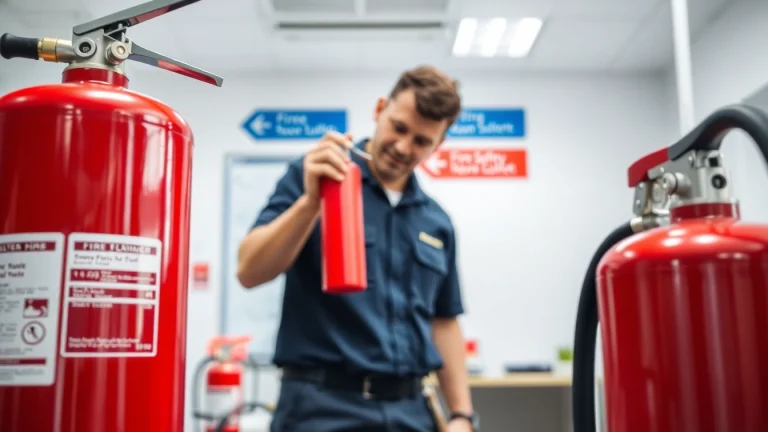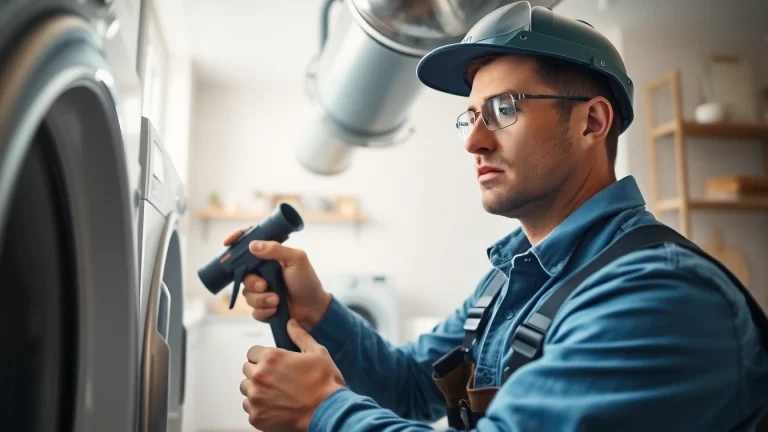
Essential Fire Extinguisher Checks: A Comprehensive Guide
Understanding Fire Extinguisher Checks
Fire extinguishers play a crucial role in emergency response, helping to control and extinguish fires before they escalate. However, having a fire extinguisher is not enough; regular maintenance and inspection are essential to ensure they function effectively during an emergency. Fire extinguisher checks are vital for ensuring safety in homes and workplaces. This article explores the significance of these checks, the inspection process, and how often they should occur.
The Importance of Regular Inspections
Regular inspections of fire extinguishers are vital for several reasons:
- Safety Assurance: Regular checks ensure that extinguishers are in working order, preventing potential accidents due to malfunctioning equipment.
- Compliance: Many local regulations and insurance policies require routine inspection of fire safety equipment. Non-compliance could lead to fines or increased liability.
- Prolonged Life: Proper maintenance can extend the lifespan of a fire extinguisher, saving replacement costs.
- Readiness in Emergencies: Knowing that extinguishers are functional provides peace of mind, especially in high-risk environments where fires might occur more frequently.
What to Look For During Inspections
During a fire extinguisher check, specific elements must be scrutinized to guarantee operational readiness:
- Location: Verify the extinguisher is easily accessible and not obstructed by any objects.
- Physical Condition: Inspect for physical damage, such as dents or corrosion.
- Pressure Gauge: Ensure that the gauge is in the green zone, indicating adequate pressure.
- Seals and Pins: Check that seals are intact and the safety pin is properly secured to prevent accidental discharge.
- Inspection Tag: Confirm that inspection tags are current and that any necessary maintenance has been performed.
Common Types of Fire Extinguishers
Know the type of fire extinguishers in your vicinity, as each type serves a different purpose. Common types include:
- A-B-C Type: These are multipurpose extinguishers used for wood, paper, flammable liquids, and electrical fires.
- Water-based: These are ideal for Class A fires consisting of ordinary combustibles.
- Foam Extinguishers: Used primarily for liquid fires, e.g., flammable liquids and some plastics.
- Dry Chemical: These are effective against A, B, and C class fires.
- CO2 Extinguishers: Suitable for electrical fires and flammable liquids as they do not leave residue.
Steps for Conducting Effective Fire Extinguisher Checks
Visual Inspection Guidelines
The visual inspection is a straightforward process that involves:
- Ensure the extinguisher is in its designated location and no obstructions are nearby.
- Check for physical damage such as dents, rust, or leaks.
- Examine the pressure gauge to confirm it is in the operational range.
- Make sure the tamper seal and safety pin are unbroken.
- Identify any signs of corrosion or damage on the discharge nozzle. Ensure that it is clear of obstructions.
Checking Pressure and Accessibility
A crucial part of the inspection is verifying both the pressure and accessibility:
- Pressure: The gauge should ideally point to the green zone. If it’s in the red (undercharged) or the yellow (overcharged) zones, it requires immediate attention.
- Accessibility: Make sure that the extinguisher is visible, easy to reach, and that it has appropriate signage indicating its location.
Documenting Findings
Documenting the results of fire extinguisher checks is vital for record-keeping and compliance. Maintain a log that includes:
- Date of the inspection
- Name of the inspector
- Details about the condition of the extinguisher
- Any actions taken (e.g., repair, recharge, or replace)
Frequency of Fire Extinguisher Inspections
Monthly vs. Annual Checks
Inspections play a pivotal role in fire safety. According to industry standards:
- Monthly Checks: Conduct a visual inspection every month to ensure there are no visible problems or obstructions.
- Annual Checks: An annual inspection by a certified professional is required. This in-depth check includes internal examinations and compliance with local regulations.
Understanding OSHA Requirements
The Occupational Safety and Health Administration (OSHA) mandates that:
- Fire extinguishers must be inspected every month.
- An annual maintenance check must be conducted by a trained professional.
- Documentation of inspections must be maintained to avoid potential legal issues.
Best Practices for Different Extinguisher Types
Best practices vary based on the type of extinguisher:
- Water-based Extinguishers: Require annual service and should be checked for corrosion.
- Dry Chemical Extinguishers: These require checks every year, with a full service every 5-6 years.
- CO2 Extinguishers: Need recharging after use and a thorough check every five years.
Creating a Fire Extinguisher Maintenance Plan
Setting Up a Maintenance Schedule
Establishing a proactive maintenance plan is essential. Start by:
- Reviewing local fire codes and regulations relevant to your business or home.
- Determining the type and number of fire extinguishers needed based on your environment.
- Scheduling monthly and annual checks, assigning responsible personnel for monthly inspections.
Training Employees on Inspection Protocols
Training provides essential knowledge on how to carry out checks, understand the types of extinguishers, and recognize when professional help is needed. Key training points include:
- The importance of regular inspections
- Understanding how to read pressure gauges
- Recognizing damaged or expired extinguishers
Leveraging Technology for Monitoring
Consider utilizing technology such as:
- Mobile Apps: There are applications that help maintain schedules, log inspections, and remind you of upcoming services.
- Smart Extinguishers: New technology is in development to make extinguishers more intuitive, with built-in monitoring and alerts for malfunctions.
Resources for Fire Extinguisher Inspections
Checklists for Comprehensive Coverage
Checklists are valuable tools for ensuring thorough inspections. Utilize standardized checklists to cover all points, including:
- Location and accessibility
- Physical inspection notes
- Pressure reading reflections
- Documentation and actions taken
Professional Resources for Assistance
Consider teaming up with certified professionals who can provide services, guidance, and resources for compliant inspections. Some resources include:
- Local fire safety companies
- National Fire Protection Association (NFPA)
- Online training programs
FAQs about Fire Extinguisher Checks
1. How often should fire extinguishers be checked?
Monthly visual inspections are necessary, with more thorough checks and maintenance required annually.
2. What should I do if my extinguisher is out of date?
Out-of-date extinguishers should be replaced or serviced to ensure they perform correctly in an emergency.
3. Who can inspect fire extinguishers?
Qualified professionals and certified fire safety inspectors can conduct thorough inspections and maintenance.
4. How do I know if my fire extinguisher is functional?
By performing regular inspections, checking the pressure gauge, and confirming that seals and tags are intact.


